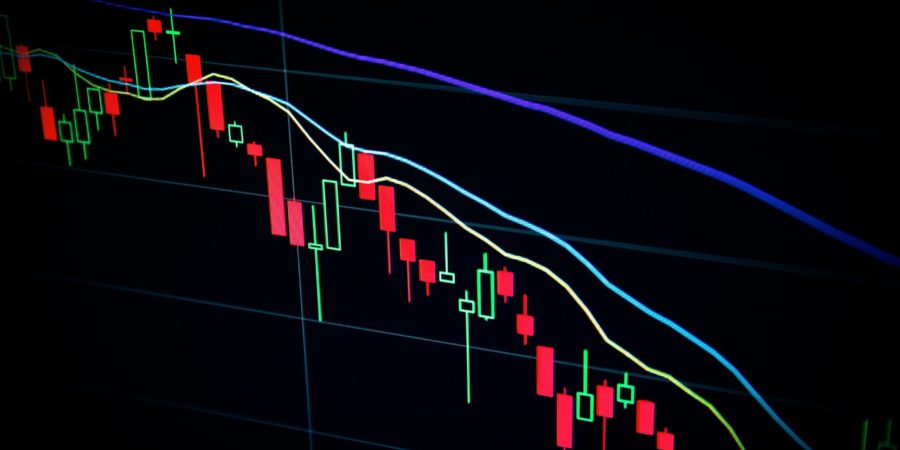Value Investing Lessons For Newbies
Around the age of 10 or 11, my Dad introduced me to this thing called investing. The first book he brought me was a gem called ‘Rich Dad, Poor Dad’ by Robert Kiyosaki, and he followed that up with another of Robert Kiyosaki’s books called ‘Cashflow Quadrant’. Those two books taught me that you could make money without necessarily having to work for it. In particular, I found the concept of stock market investing very intriguing.
Timing influences outcomes right. Around this time, the late 90’s Warren Buffet was at the height of his investing fame and was the goto investment guru for the media. Which coincidentally was when I first gained access to the internet. A few ‘stock marketing investing’ searches on ‘Alta vista’ brought up 100’s of results about this guy called Warren Buffett.
I became fascinated by Warren Buffett and Berkshire Hathaway’s success. I spent the better part of the next decade reading about him and trying to understand his investment philosophies.
Roughly 15 years later, after that first AltaVista search, I raised some money (begged) from my family and created my first investment fund, Rhodium Capital.
Unfortunately, or so I thought at the time, my first full year of trading produced a disappointing 8% ROI, net of taxes. Well, short of the 20% target I set for the fund.
I choose the 20% target based on Berkshire Hathaway’s long term performance. I figured if Warren achieved that level of return and I was following his investment strategy, I could too.
At the time, I didn’t realise the flaws in my logic; 8% was a satisfactory result and benchmarking myself against Warren was a terrible idea.
First of all, Warren and Berkshire have a combined 200 years plus of investing experience while I had one. But more importantly, I made the mistake of judging my performance based on short-term results that I had little control over.
A value investor’s job isn’t to trade on the whims of the market but to find valuable companies selling at reasonable prices (discounted to your valuation) and hold them for long periods.
Berkshire had averaged a 20% yearly return over 40 years. But looking at any individual year, their returns vary wildly.
My first full trading year was in 2015. From Jan 1 2015, to December 31st 2015, the market rose from 5,744 to 6,170.22, a ~7.5% return, while I had returned ~11% gross.
I’d beaten the market by a considerable amount, almost 4% when calculated comparably, a 46% outperformance. I missed this because I was too focused on the silly targeted return I’d set for the fund.
LESSON 1 – Invest To Get The Best Returns Not To Meet Some Arbitrary Goal
I could have set myself far better performance metrics by using appropriate context.
• Performance vs the market, i.e. NZX50
• Performance vs my peers, i.e. other NZX50 investment funds
It’s essential to use a contextual reference because the market has many underlying invisible forces that affect individuals stocks and the market as a whole that we can’t control. It doesn’t mean the underlying fundamentals of the businesses have changed.
I invested in companies I thought were solid with good prospects, which you will see later mostly turned out to be true. I should not have let general market metrics, i.e. the NZX50 P/E ratio, affect my assessment of any individual company.
LESSON 2 – Benchmark Your Performance Against Your Peers
If I had stuck to value investing, I wouldn’t have considered selling out.
Looking back now, I can see from 2015 to 2021, the nzx50 rose from 5744 to 13,127, a 5-year return of 228% or 18% year on year.
Across the preceding decade (2010 – 2020), the market rose from 3,164 to 13,127, an astonishing 415% return a little above 15% yearly.
2015 was an outlier year with a market return of just 7.5%.
Looking at the companies I invested in; if I’d remained invested, I would have easily outperformed the market and beaten my 20% performance metric over the long-term.
Here are a few
Air New Zealand
A2 Milk
Infratil
Tourism Holdings
Xero
Diligent Board Member Services
• I was dollar-cost averaging, i.e. buying in overtime, so these weren’t my full holdings.
Some of these companies’ share prices went nowhere. Well, they went up, then Covid happened, and they came back down. However, more than a few have 2x – 10x’d since.
This is the first time I’ve reflected on this period of my life with honesty. The outcomes of 2015 and what might have been’ have been nagging at me for a while. I am genuinely surprised by how good my stock selections were.
As I said, I concluded that the market was overvalued, sold out and moved on. But really, I’d set myself a silly metric to measure my performance against that wasn’t at all contextual to what was happening in the market or relevant to any individual company.
If I had written out my investing rules and followed them, this wouldn’t have happened.
LESSON 3 – Write Your Investing Rules On Paper And Follow Them Religiously.
I told myself the market was overvalued, and there were no decent investment opportunities left. But that’s essentially saying that all the companies I invested in because of good fundamentals were no longer good and didn’t have future growth prospects, which wasn’t true.
I made up a story in my mind to suit the outcomes I’d been faced with based on silly metrics that ignored all the fundamentals I’d learnt about value investing.
If I’d been honest with myself, I would have been able to see that my ‘market is overvalued’ conclusion was merely me trying to protect my ego.
LESSON 4 – Be Honest With Yourself
This leads me to the last and most significant mistake.
I started reading this book called momentum masters.
Before I pulled the pin on stock market investing and started looking for businesses to buy, I decided to have a go at technical trading. The complete opposite of value investing, it ignores all fundamentals of a company and uses ‘signals’ from the market to determine buy and sell points.
At the time, I thought I could make it work, but realistically I had no idea what I was doing. I’d read about value investing for almost ten years before I started that fund; I’d read about technical trading for three months.
I guess this goes back to my other lesson, write out your rules before you start and stick to them.
I was lucky not to lose a serious amount of money by drifting into technical trading. I made a small profit, but that was due to luck more than anything else. I deserved to lose. Luckily I came to my senses a few months later and admitted that this was a terrible idea.
You know your investment strategy is flawed when it is based on hope rather than confidence.
I think the lesson here is to stick to what you know. Like Warren Buffett always talks about ‘your circle of competency’. Technical trading was well outside my wheelhouse, and I knew it.
LESSON 5 – Stick To What You Know
I wrote this article because I’ve been thinking about value investing again after reading the book ‘The Outsiders’. I don’t want to make the same mistakes I’ve made in the past, so what better way to avoid those than to reflect on them.
As of writing 05/03/21 – Asset prices are at a crazy high, so perhaps this isn’t the right time. Still, I know when I do make that move, I have a few useful principles that I can fall back on that will hopefully help me avoid past mistakes and make better investment decisions in the future.
What Charlie Munger would call ‘avoiding looking like a fool, rather than trying to be cool’.
This is a memo to my future self more than anything else. However, I hope you find something useful here too.


